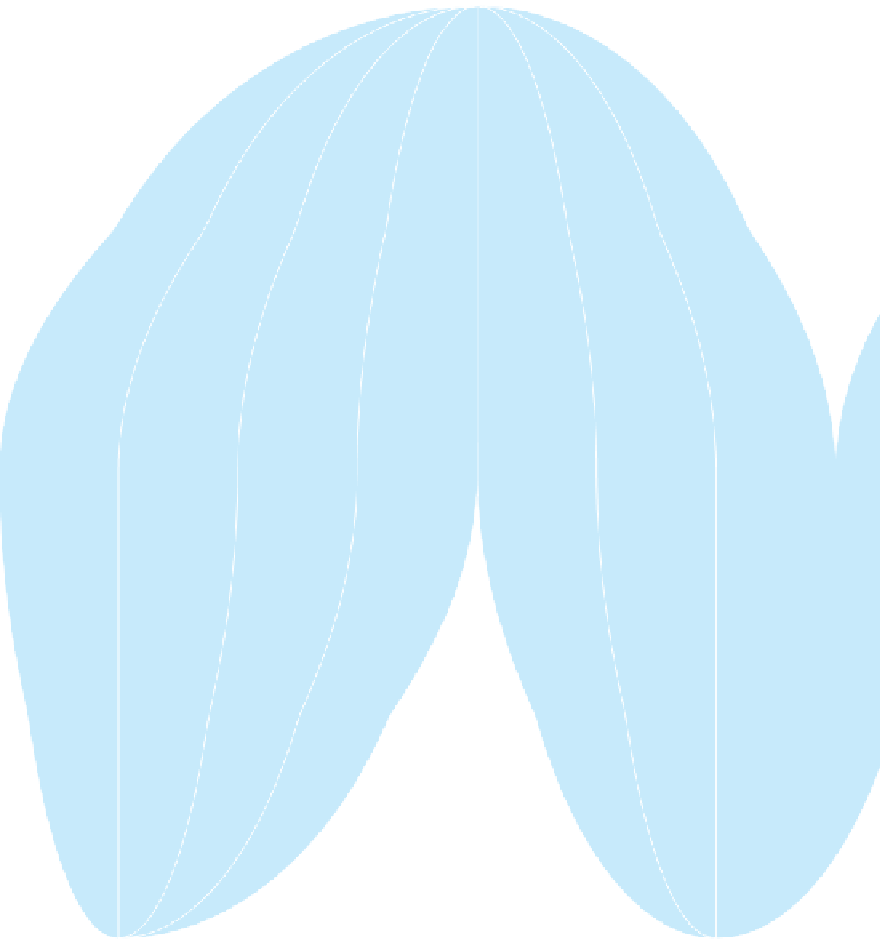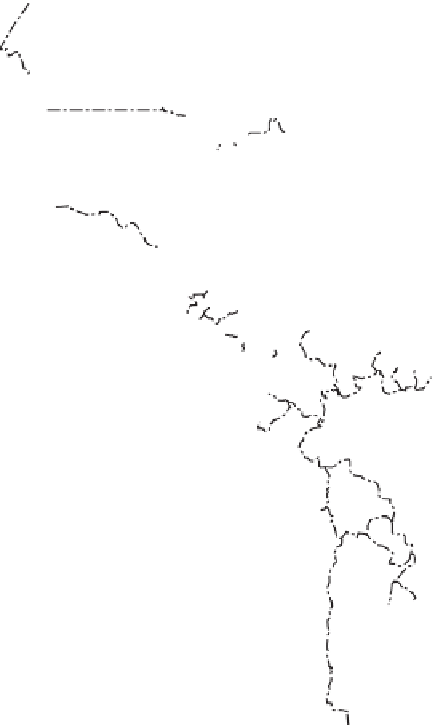Geography Reference
In-Depth Information
WORLD CLIMATES
After Köppen-Geiger
E
E
A
HUMID EQUATORIAL CLIMATE
E
H
E
60
°
Af
No dry season
Cfc
Dfc
Am
Short dry season
Dfc
Cfb
Dfb
Dfb
Aw
Dry winter
H
BSk
Dfa
BWk
40
°
Csb
40
°
B
DRY CLIMATE
BWk
Cfa
Csa
ATLANTIC
OCEAN
BS
Semiarid
h=hot
k=cold
BSh
BWh
BSh
Cfa
Aw
BW
Arid
BWh
Tropic of Cancer
BSh
H
20
Aw
20
20
°
°
°
Af
Af
Am
Aw
C
HUMID TEMPERATE CLIMATE
Af
BWh
Aw
BSh
Cf
No dry season
Af
Am
Aw
Af
a=hot
summer
b=cool
summer
c=short, cool
summer
d=very cold
winter
PACIFIC
Aw
Cw
Dry winter
Af
Af
Equator
0
°
Cs
Dry summer
Am
Am
Aw
Af
OCEAN
D
HUMID COLD CLIMATE
Aw
Cwa
Df
No dry season
Af
BWh
20
°
20
°
20
°
Cwa
H
Dw
Dry winter
Tropic of Capricorn
BWk
Af
E
COLD POLAR CLIMATE
BSh
Cfa
BSk
E
Tundra and ice
Cwa
BSk
BWk
BSk
Csb
40
°
40
°
40
°
4
Cfb
H
HIGHLAND CLIMATE
E
Cfb
H
Unclassified highlands
160
140
120
80
°
60
°
40
°
°
°
°
60
°
60
°
60
°
60
°
SOUTHERN
OCEAN
0
1000
2000
3000 Kilometers
E
E
0
1000
2000 Miles
Figure 11.17
World Climates.
The Köppen map of world climates, as modifi ed by R. Geiger. These are
macroclimatic regions; microclimates are set within these but cannot be shown at this scale.
population clusters have developed in these water-
defi cient regions, especially at lower (and warmer) lati-
tudes. The world faces a long-term water crisis, and the
Köppen map helps show why.
The (C) climates also have familiar names. The (Cf)
climate, represented by dark green, prevails over the
southeastern United States. If you know the local climate
in Atlanta or Nashville or Jacksonville, you understand
why this climate is often called “humid temperate.” It is
moist, and it does not get as cold as it does in Canada or as
warm (continuously, anyway) as in the Amazon Basin. If
you have experienced this kind of climate, the map gives
you a good idea of what it's like in much of eastern China,
southeastern Australia, and a large part of southeastern
South America.
The “dry summer” (C) climates are known as
Mediterranean
climates (the small s in Cs means that sum-
mers are dry). This mild climate occurs not only around
the Mediterranean Sea, and thus in the famous wine coun-
tries of France, Italy, and Spain, but also in California,
Chile, South Africa's Cape, and southern parts of
Australia. So you know what kind of climate to expect in
Rome, San Francisco, Santiago, Cape Town, and Adelaide.
Farther toward the poles, the planet gets rather cold.
Note that the (D) climates dominate in the United States'
upper Midwest and Canada, but it gets even colder in















































































































































































































































































































































































































































































































































































